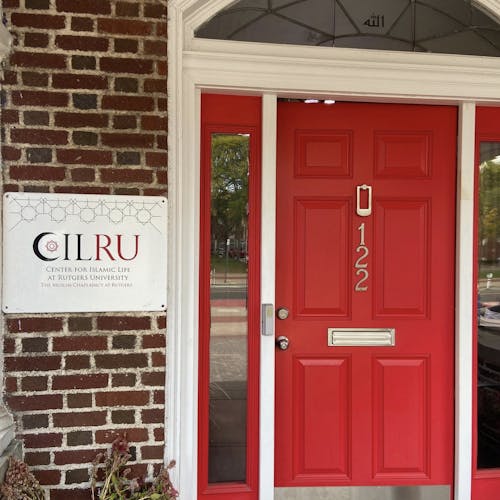Tyler Clementi Center, Right to Be event discusses techniques to develop mental resilience

On Tuesday, the Tyler Clementi Center for Diversity Education and Bias Prevention and Right to Be hosted their final collaborative training of the Spring 2024 semester, "Resilience This Moment and Beyond."
The virtual event, led by Tabark Abdelhabib, a Right to Be training and facilitation specialist, sought to educate the public about methods to build mental resilience, defined by Right to Be as the ability to recoup from crises and negative situations.
The interactive training used anonymous polls, a Q&A box and other activities to engage the audience as they explored various resilience techniques.
Abdelhabib began the workshop by explaining the difference between resilience and self-care. She also spoke about misconceptions regarding the lack of control people can feel when navigating challenging times.
While discussing the nature of resilience later in the event, Abdelhabib said people tend to be more familiar with supporting others than they are with supporting themselves. Developing resilience in oneself requires consistency and long-term refinement and may even require professional advice.
Abdelhabib then elaborated on a three-strategy model of resiliency involving acceptance, interpretation and appropriate response to an event. For each, she laid a foundation of the strategy and provided specific techniques to implement it.
She said the first strategy involves embracing positive and negative emotions associated with an event simultaneously without criticizing them. An inability to balance both can drive people to unhealthy coping mechanisms, such as substance abuse and media overuse, to receive momentary gratification.
Techniques Abdelhabib associated with this strategy include body scanning, or identifying and labeling areas of tension in the body, defining feelings, practicing gratitude, engaging in physical exercise and a breathing technique called box breathing which can increase mindfulness, relaxation, immunity and metabolism.
Before guiding the group through a body scan, she explained the role of the body and its cues when it discerns stressors. She said these natural cues can also be related to a larger discussion about intergenerational trauma and resilience.
"For some people, traumatic events can be passed down generation to generation." Abdelhabib said. "They're impacting how we experience the world. And as we have seen, that intergenerational trauma can be passed on. The opposite is also true. Resilience can be passed down."
Abdelhabib then transitioned to discussing the second strategy, involving ownership of an experience and lessons from it, using something known as the "Blue Car" phenomenon.
The Blue Car phenomenon utilizes a situation in which someone sets an intention of looking for a blue car, she said. Once the intention is set, and the person begins to expend attention looking for it, they will likely see many blue cars around them.
"It's about the frequency of illusion," Abdelhabib said. "And sometimes you're like, 'Were they always this common, or (have) I just been paying more attention to them?'"
The phenomenon can be applied to situations where someone is experiencing a period of unfortunate events. In such circumstances, they may feel like these events keep unfolding or compounding, even if it may just be that they are simply noticing these issues more.
Abdelhabib said techniques associated with this second strategy include the use of positive affirmations to change implicit and negative emotions that result from frustrating experiences and engaging in creative pursuits, such as art, to comprehend a given situation.
Before discussing the third strategy, Abdelhabib shared a video discussing the Ladder of Inference, a tool used to explain the evolution by which people interpret any given experience. The video explains that the ladder has six rungs.
The video said the first rung is the experience, and the second and third relate to the application of personal biases and interpretation of events. The fourth rung represents people making assumptions, which culminates into the fifth, sixth and seventh rungs: the creation of the conclusions they make, their assumptions about the world and how they act on those assumptions, respectively.
Abdelhabib said the video exemplifies how decision making and breaking the cycle forwarded by the ladder defines the third strategy.
From a personal perspective, breaking the cycle can look like self-regulation, communicating with personal networks and investing in yourself, she said. On a larger scale, breaking the cycle can look like activism.
"We'll talk about creating a story," Abdelhabib said. "Creating your story allows you again to realize what you are in control (of), and then being in choice is another actionable step that you do. It is where resilience happens."



